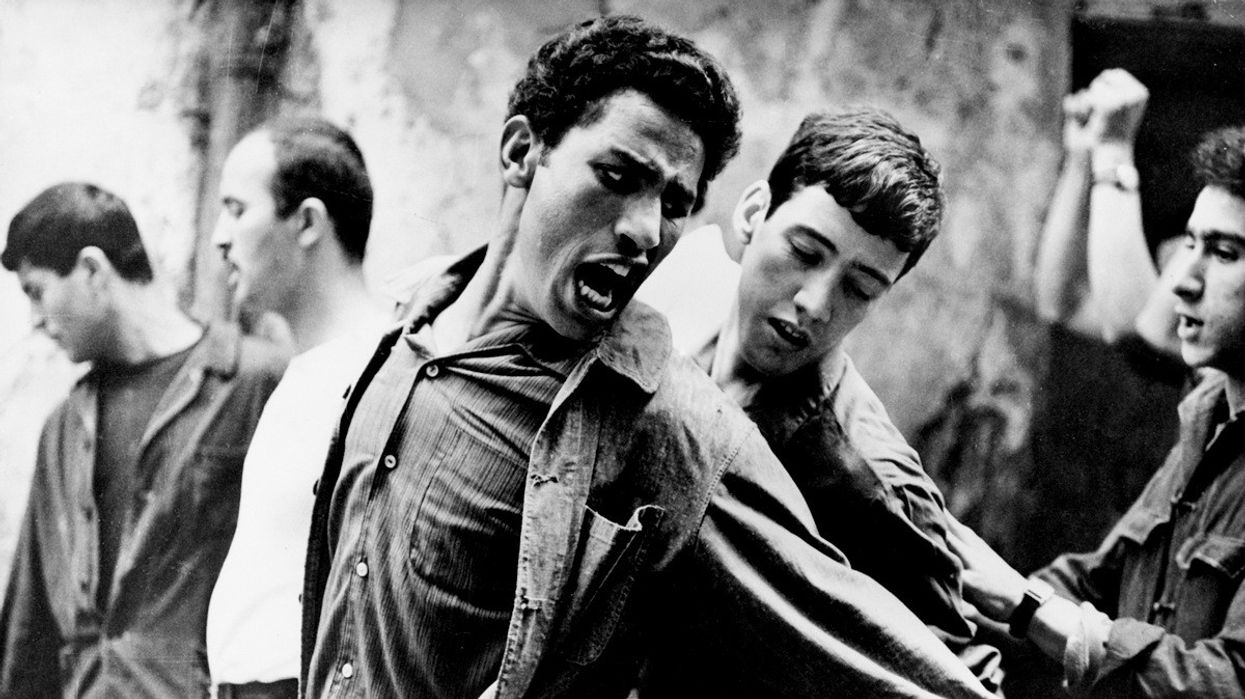10 Film Movements That Changed Everything
Like messages in bottles, film movements come in waves. And also like those floating, nautical correspondences, the significance of their messages aren't often received until much, much later.

CineFix has compiled a list of 10 of the most influential film movements in cinematic history, including Italian Neorealism, Soviet Montage, and a handful of "new waves".
Studying the work of auteurs like Godard, Rossellini, and Bergman is great, but learning why their work was significant historically will broaden your scope on cinema as a whole -- how it ebbs and flows, grows, changes, and cycles. For instance, you could watch Pierrot le fou and think, "Man, that Jean-Luc Godard makes some eccentric and quirky films! He's just like Wes Anderson," but if you take a second to inform yourself on pre and post-WWII France, Jean Renoir, Cahiers du Cinéma, the whole Truffaut vs. Godard thing, even La Grande Vadrouille -- the film that helped usher commercial films back into the French mainstream -- then you'll really understand (and really appreciate) the rebellious, transcendent work those Nouvelle Vague filmmakers were doing.
If you don't have time to watch the video, here's the list of each of the film movements mentioned in the video, complete with descriptions from CineFix and several films that'll give you a good introduction.
British New Wave (late 1950s - late 1960s)
A focus on the realities of working class daily life.
Watch: Saturday Night and Sunday Morning (Karel Reisz), The Sporting Life (Lindsay Anderson)
Scandinavian Revival (1940s - 1950s)
Dark, monochrome, slow, and a little bit mystical.
Watch: The Seventh Seal (Ingmar Bergman), Day of Wrath (Carl Th. Dreyer)
Japan’s Golden Age of Cinema (1950s)
Filmmakers in an unoccupied and uncensored post-WWII Japan unleashed all of their creativity at once.
Watch: Seven Samurai, Rashomon (Akira Kurosawa), Tokyo Story (Yasujiro Ozu)
New Queer Cinema (early 1990s)
Embracing gender and sexuality as socially constructed objects.
Watch: Paris is Burning (Jennie Livingston) Go Fish (Rose Troche)
Third Cinema (1960s - 1970s)
Staunchly anti-colonial in countries of the third world.
Watch: Hour of the Furnaces (Fernando Solanas, Octavio Getino), The Battle of Algiers (Gillo Pontecorvo)
Neorealism (1944–1952)
Stories, shot on location, filled with lower class non-actors struggling to go about their normal lives in the the shadow of the war.
Watch: The Bicycle Thief (Vittorio De Sica), Paisan (Roberto Rossellini)
German Expressionism (1910s - 1930s)
Shadowy movies with exaggerated design as a rejection of reality.
Watch: Nosferatu (N.F. Murnau), The Cabinet of Dr. Caligari (Robert Wiene), Metropolis (Fritz Lang)
Soviet Montage (1920s - 1930s)
Focus on cutting because that’s what separates film from other art forms.
Watch: Battleship Potemkin (Sergei Eisenstein), Man With a Movie Camera (Dziga Vertov)
The Golden Age of Hollywood (late1920s - early 1960s)
As the rest of the world dealt with war the American film market thrived and benefitted from refugee filmmakers who had come to the US to escape the turmoil.
Watch: Casablanca (Michael Curtiz), Citizen Kane (Orson Welles)
Nouvelle Vague (1958 - late 1960s)
Filmmaking as art by auteurs, not pandering to viewers or made solely for profit.
Watch: Breathless, Pierrot le fou (Jean-Luc Godard), Jules and Jim, The 400 Blows (Fraçois Truffaut)
For a full list of all of the film movements, as well as key films to watch from each of them, CineFix has uploaded this Google doc to check out.
Source: CineFix














